Planting and caring for water hyacinths in winter and summer
An unpretentious plant of natural and artificial warm water bodies - water hyacinth - can feel equally good both in aquariums and in natural habitat. Reproduction and planting of water hyacinths are available even to inexperienced amateurs. He began his triumphant march across countries and continents from the subtropics of South Africa. There eichornia (this is the second name of a perennial) felt well in small stagnant bodies of water. Water hyacinth forms rosettes of bright leaves on petioles on the surface of the water, ending at the base with voluminous cavities filled with air.
During the flowering period, amazing flower stalks are formed on it, reminiscent in shape and color of orchid flowers. Despite the name, eichornia does not belong to the family of hyacinths, it's all about the similarity of the flower arrow with the peduncles of the plant of the same name.
The extraordinary vitality of the water hyacinth and its ability to reproduce in the shortest possible time became a real disaster in those parts of the world where it got artificially and where there are no insect species that naturally regulated the number of the invader of the water area in the region of its origin. The indisputable advantages include its ability to purify water from harmful impurities, as well as the fact that perennials require minimal care. Water hyacinth can even sanitize water bodies at sewage facilities.
How to plant eichornia?
In its homeland, the perennial multiplies in 2 ways:
- separation of young outlets from the mother;
- seeds.
Since the seeds ripen at temperatures above + 35⁰C, planting in this way has no practical value for the regions of southern Russia and the middle belt.
In its natural habitat, seed reproduction of eichornia occurs as follows:
- after flowering, ripe seeds fall into the water from a spontaneously bursting seed box;
- in warm climates, the seeds germinate and form many young specimens.
In cool water, the seeds quickly rot and become unviable.
In a vegetative way, water hyacinth reproduces in a similar way to garden strawberries - by separating the "children" from the mother plant. Their growth is especially active during a decrease in daylight hours. In a month, this water "incubator" is capable of producing up to 100 daughter shoots, which do not need scrupulous care at all. Planting the eichornia is not very difficult - the sockets are simply separated, keeping small roots on them, and placed in a new reservoir.
Advice
Separate daughter plants with gloves, as eichornia juice contains cyanic acid, which causes itchy skin.
The best time to breed is early summer. If the optimal growing conditions are observed, the roots begin to grow at the young rosette, new leaves appear. The growth of the vegetative mass is more active if the water in the new reservoir contains impurities for the growth and development of a young plant - organic or mineral fertilizers.
How to care for water hyacinth?
Having organized the optimal care of the water hyacinth, you can count on a lush bloom. Although the flower exists for only one day, with a large number of hyacinths, you can admire the delightful sight for a long time. A native of the rainforest, Eichornia is very fond of sunlight. It is the abundance of the sun that stimulates it to bloom. In the shade and partial shade, it will be able to grow and reproduce with the help of children, and it is not always possible to achieve flowering under such lighting.
Temperature regime
In its homeland, water hyacinth grows in a fairly hot climate, it prefers temperatures of at least 22⁰C for its growth and reproduction. The optimal time for planting a plant in open reservoirs of the middle zone is June, in the south you can plant a month and a half earlier - at the end of April, in May.
During growth, Eichornia prefers temperatures from +25 to + 27⁰C, flowering specimens require even more heat. A sharp difference between nighttime and daytime thermometer readings is detrimental to hyacinth. Winter care should provide him with a temperature of at least + 15⁰C.
Composition of water and feeding
Plants become especially beautiful when grown in water rich in organic matter. In natural lakes, these impurities are formed naturally; additives are purposefully introduced into artificial reservoirs. When constructing a new decorative reservoir, there is no feeding in the water, therefore, in order to achieve a violent flowering of a collection of water hyacinths, it is worth adding at least a complex fertilizer for aquarium plants... Over time, the amount of organic matter in the water will increase, and fertilizing will have to be done less often.
Advice
The addition of a superphosphate solution to the water will help the withering transplant to get into optimal shape faster.
Fertilizer for eichornia:
- bottom sludge;
- humus;
- infusion of mullein or compost;
- complex mineral fertilizers for aquatic plants.
A plant that has received such care is distinguished by developed rosettes and powerful roots that reach the bottom of the reservoir. The roots of the plant act as a kind of filter, they purify water from toxic substances that have entered it: metal salts, insecticides, phenols. This property of eichornia can be useful for the owners of a stocked reservoir to keep the water in it clean.
True, there is another danger here - the surface of the water closed with powerful outlets will deprive the fish of oxygen access. You can get out of this situation if you constantly adjust the number of specimens of eichornia on the water surface.
Wintering
The juicy parts of the water hyacinth will not tolerate even a minimal temperature drop below 0⁰C. To preserve the plant until the next season, you need to create suitable conditions and provide optimal care.
Water hyacinth overwinters:
- in aquarium;
- in wet sand;
- in a glass container;
- in the silt.
Advice
Keep the Eichornia away from drafts during the winter. However, the plant will not be able to fully exist without access to fresh air, therefore, its content in a completely enclosed space such as a terrarium is unacceptable.
For the wintering to be successful, you need to follow a few simple rules.
- The water should be exactly the same as in the "native" reservoir. In extreme cases, the water hyacinth will be able to overwinter in pre-separated water. Taking care of the plant will be much easier if you can stock up on water for the whole winter.
- At the bottom of the container for wintering, you need to lay silt to feed the roots of the plant.
- Planting for winter storage should be done in a transparent container: aquarium, glass container.
- To feed the plant in winter, you need to dissolve a complex fertilizer for aquarium plants in water.
- Illumination for eichornia is desirable, but not required - it is quite capable of overwintering on the windowsill on the south side of the room. Nevertheless, for excellent well-being, it is worth providing the plant with 12-hour daylight hours using a fluorescent lamp.
- To prevent rotting of the lower leaves will help planting the plant for the winter on a "raft" of foam.
- During wintering, the water hyacinth is content with room temperature.
Lovers of aquatic flora can easily provide winter care for eichornia planted in wet sand or silt. It is best if it is placed in transparent containers.In regions with mild and warm winters, water hyacinth overwinters well in a regular water barrel placed in a heated greenhouse.
After wintering properly, the plant is placed in a reservoir, where it quickly grows leaves, by August it throws out a peduncle and pleases lovers of aesthetics with exotic flowers.
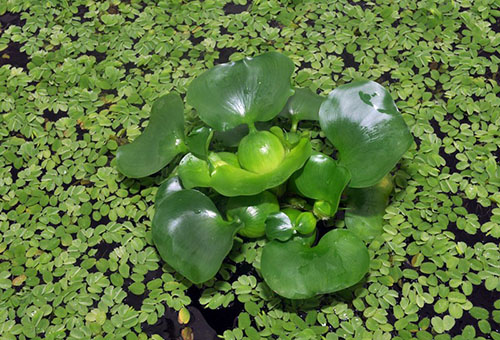
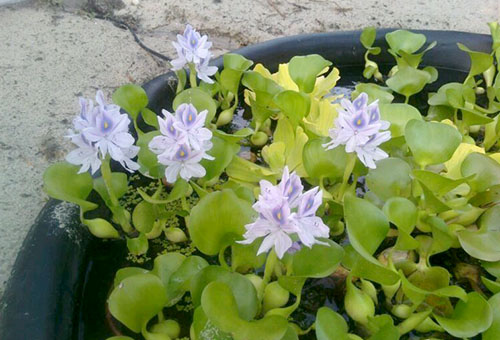
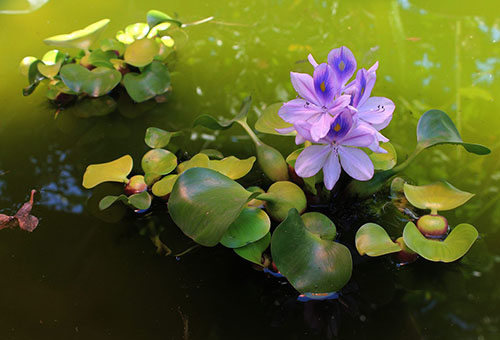
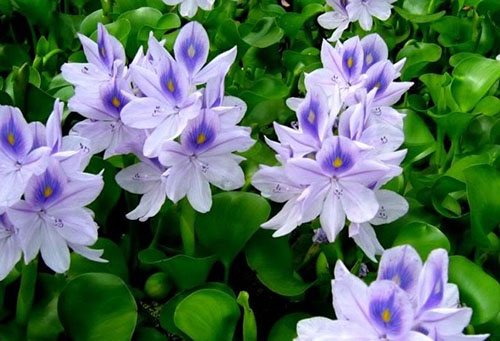


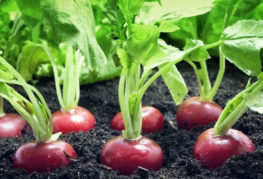
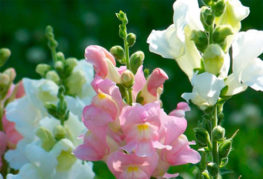
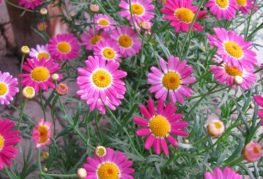
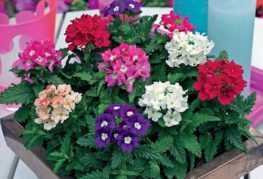
and will be published shortly.